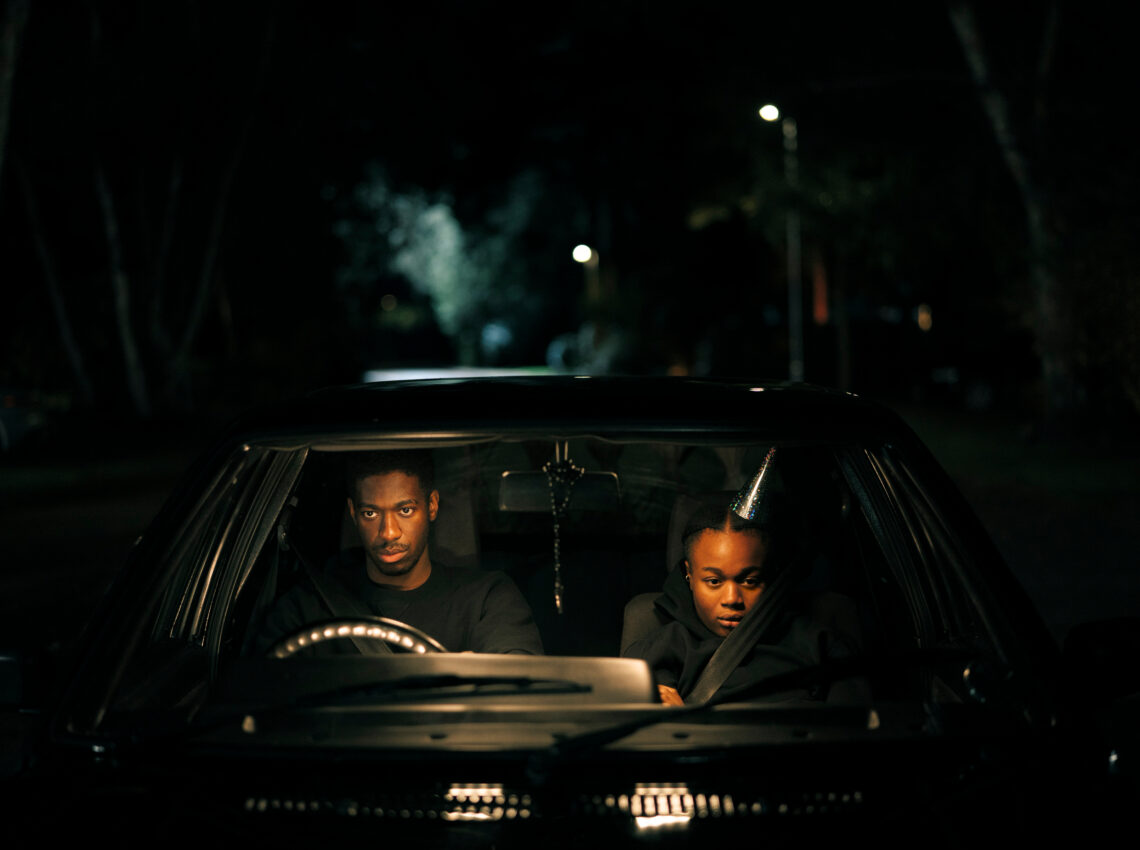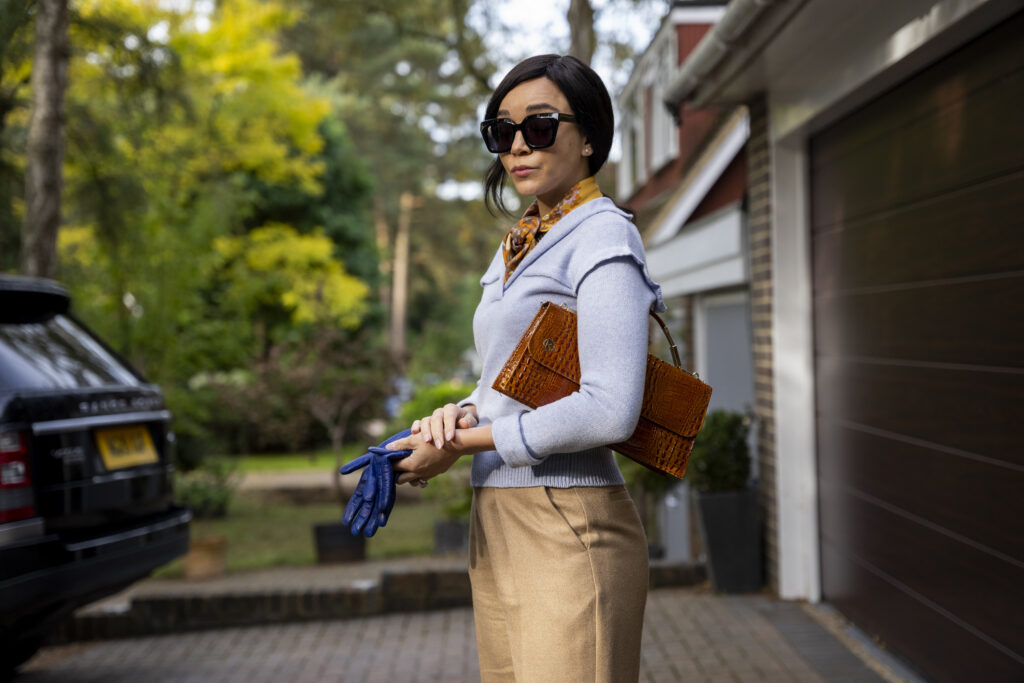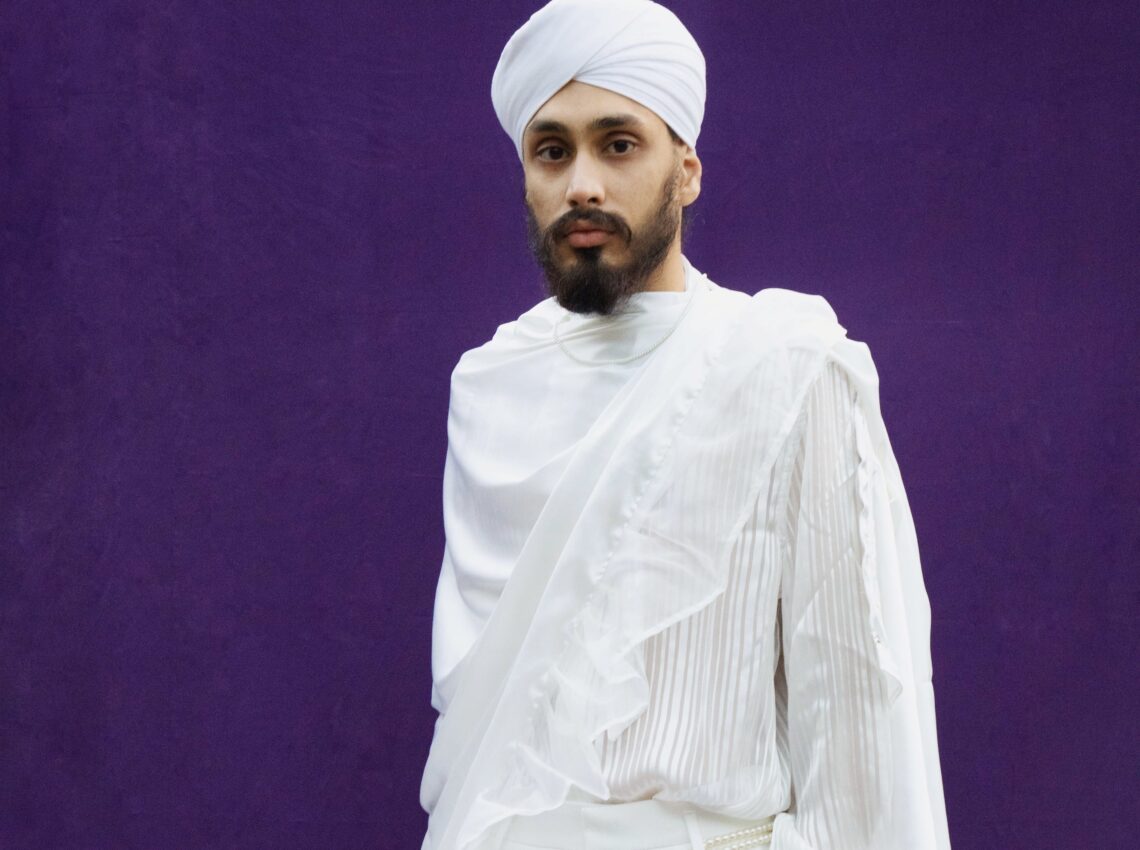In ‘The Strays’, Suburban Perfection & Eerie Music Bring the Trauma of Internalised Racism to Life

White picket fences, women dressed in perfectly placed pearls, and musical orchestras are all part of the charm of the psychological thriller that we’ve come to know and love. The concept of a character living an ideal life, only to realise that not everything is what it seems, is what makes the genre so engaging- and Netflix’s new movie ‘The Strays’, a must watch.
In his feature debut, director Nathaniel Martello-White tells the story of Neve, a light skinned Black woman living in quaint suburbia with her husband and two kids, where their life is carefully curated and looks like something out of a 1950s commercial. But with the introduction of two ominous figures, things begin to unravel for Neve, and she is forced to confront the unfinished business of her past.

“I was really interested in the suburban thriller trope, so I was thinking of a way to bring the idea of code-switching and running away from your Blackness into that trope. We don’t really see British films like that, so I felt we were due one”, Nathaniel explains.
The film explores how Neve navigates her new life as a wife, mother and headmistress trying to assimilate into white, middle-class life full of people that look nothing like her. From practising her accent in the mirror, to covering her natural hair with wigs that mimic that of her neighbours, Neve does whatever is necessary to survive in her new world; at the expense of her Blackness, and the desire her children have to learn more about their Black heritage.
“People don’t alway realise that as we experience racism, we internalise a lot of it, and I wanted to write about what that does to a person”, Nathaniel tells me.
Throughout the film, we see Neve nervously looking over her shoulder and scratching at her wigs- a sign that her survival tactics serve more as a coping mechanism than a remedy to the racism she endures in this world she’s chosen for herself.
“I didn’t want to make a comment on Black hair, I just wanted to show the nuances of it”, Nathaniel continues.
“I was trying to explore the idea of disguise and persona, and Neve’s choice to lean into a more European ideal of expression in order to be accepted; compared to her daughter, Mary, who wants to learn more about her Black side and wants to express that part of herself, but isn’t given the space to do that”.
“But then we also got to show the beauty of Black hair through Bukky Bakray’s character Abigail- she has 3 or 4 different styles that she wears her hair in, which is great cause she’s just expressing herself in a way that’s really authentic.”

From striking imagery to a creepy soundtrack, ‘The Strays’ has all the hallmarks of a great psychological thriller; but beyond that, it tells a story of the Black British experience, starting conversations about class, race, colourism and generational trauma.
When I ask him how he chose to tackle those issues, Nathaniel speaks about the pressure of telling stories like these: “It’s always complicated being an artist of colour because everything that’s made is expected to encapsulate the entire Black experience which is impossible. But I like movies that present difficult and complex questions, and audiences get to bring their own personal experience to that story.”
“Sometimes when you wrap it up in a neat bow, you almost let the audience off the hook, and I want this to be a movie that people are still thinking about months afterwards, and want to come back to watch”.
The Strays is streaming now on Netflix. Watch our interview with stars of the film Ashley Madekwe & Jordan Myrie, below:




![ZINO VINCI’S ‘FILTHY & DISGUSTING’EP BRINGS YOU TO THE CORE OF THE ARTIST [@ZinoVinci]](https://guap.co/wp-content/uploads/2023/10/Zino-4.jpg)





![Remel London’s [@Remel_London] “Mainstream” is a must attend for upcoming presenters!](https://guap.co/wp-content/uploads/2017/02/REMEL-LONDON-FLYER-FINAL-YELLOW-COMPLETE-1.png)